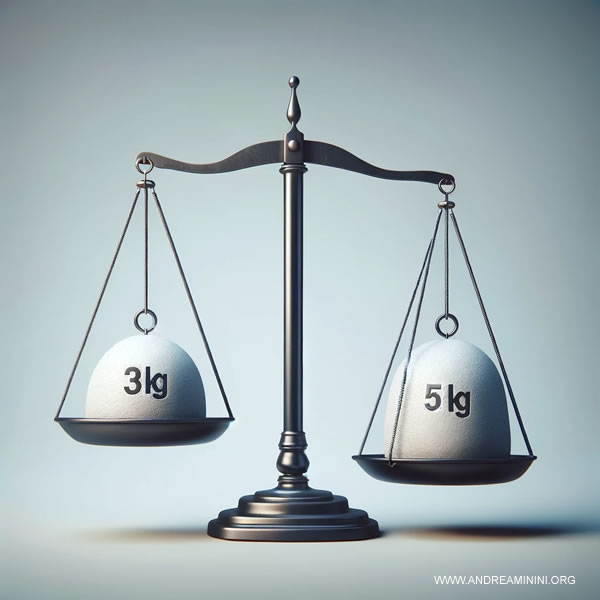Measurements
Measurement is a quantitative value that reflects the size or extent of an object or phenomenon according to a specific scale or unit of measure.
In other words, a measurement indicates the amount of a property in relation to a defined unit of measure.
It results from the act of measuring and comprises two essential elements:
- a number (also known as a scalar)
- a unit of measure
This process allows us to assign a precise quantity to a physical property, such as length, mass, volume, time, and so forth.
Why is it important? Measurements are crucial in many fields because they enable us to understand, compare, and communicate physical properties objectively through a standardized unit of measure that is universally accepted.
It's important not to confuse measurements with properties, as they are not the same thing (see difference between properties and measurements).
A property is what you aim to measure (e.g., length), while a measurement is the quantified value of that length obtained using a specific unit of measure (e.g., 2 meters and 3 meters are two different measurements of the same property).
A Practical Example
Let’s say I want to measure the length of a table. In this case, the property is "length," which is a general characteristic of objects that can be measured in various contexts.
To determine the measurement of this length, I use a tape measure.

After measuring the table, I find it is 1.5 meters long. Therefore, "1.5 meters" is the measurement of the table’s length.
In summary, in this example:
- the property measured is length
- the measurement obtained is 1.5 meters, where "1.5" is the numerical value and "meters" is the unit of measure.
This measurement provides specific quantitative information about the property (length) of the table.
Properties of Measurement
The main properties of measurement are as follows:
- If two homogeneous properties, A and B, differ, then their measurements, M(A) and M(B), will also differ, and vice versa. $$ A<B \Longleftrightarrow M(A) < M(B) $$ $$ A > B \Longleftrightarrow M(A) > M(B) $$
- The measurement of the sum of two homogeneous properties, M(A+B), is equal to the sum of the measurements of the individual properties, M(A) + M(B). $$ M(A+B) \Longleftrightarrow M(A)+M(B) $$
What is a homogeneous property? Two properties are homogeneous when they are measured in quantities of the same type and can be compared or combined mathematically, as they are expressed in the same unit of measure. For example, two homogeneous properties related to weight could be the weight of two packages, one weighing 5 kilograms and the other 3 kilograms, which can be compared (5 kg > 3 kg) or added (5 kg + 3 kg) to obtain a total weight of 8 kg.

- Theorem of Ratios Between Homogeneous Properties
The ratio between two homogeneous properties, \( A \) and \( B \), is defined as the quantity of \( A \) measured using \( B \) as the unit of measure. If \( B \) is not zero, then the ratio \( \frac{A}{B} \) is equivalent to the ratio of their measurements, \( \frac{M(A)}{M(B)} \), regardless of the unit of measure used. This is expressed as $$ \frac{A}{B} = \frac{M(A)}{M(B)} $$. - Proportional Properties
Two pairs of homogeneous properties, such as A and B, and C and D, where neither B nor D is zero, are proportional if the ratio between the properties in the first pair is equal to the ratio between the properties in the second pair. $$ \frac{A}{B} = \frac{C}{D} $$ Mathematically, this proportionality is often expressed as \( A:B = C:D \), indicating that A is to B as C is to D. $$ A:B = C:D $$Corollary. If two pairs of homogeneous properties are proportional, then the ratios of their respective measurements are also proportional. $$ \frac{A}{B} = \frac{C}{D} \Longleftrightarrow \frac{M(A)}{M(B)} = \frac{M(C)}{M(D)} $$
And so on.
